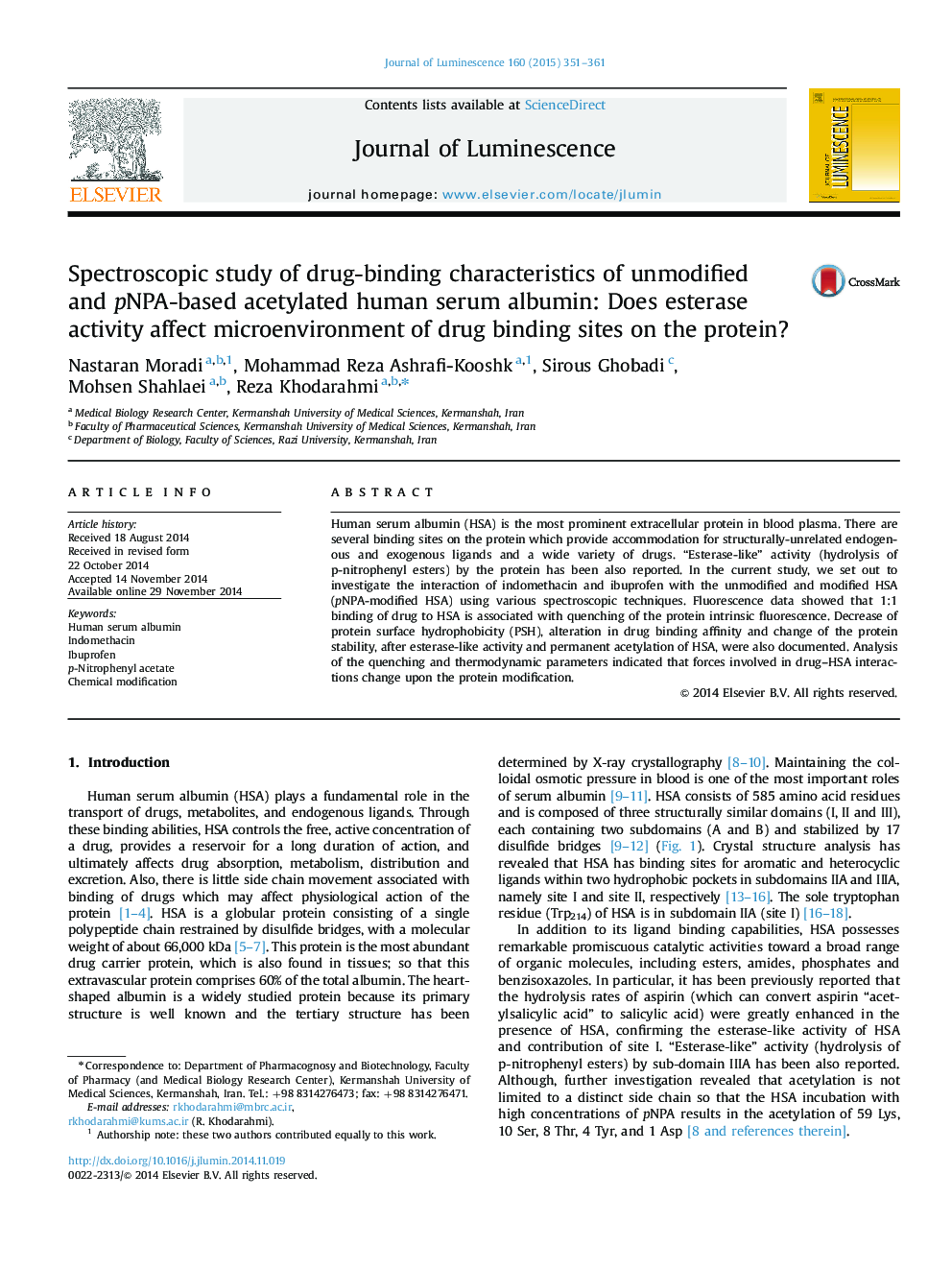| Article ID | Journal | Published Year | Pages | File Type |
|---|---|---|---|---|
| 5399395 | Journal of Luminescence | 2015 | 11 Pages |
Abstract
Human serum albumin (HSA) is the most prominent extracellular protein in blood plasma. There are several binding sites on the protein which provide accommodation for structurally-unrelated endogenous and exogenous ligands and a wide variety of drugs. “Esterase-like” activity (hydrolysis of p-nitrophenyl esters) by the protein has been also reported. In the current study, we set out to investigate the interaction of indomethacin and ibuprofen with the unmodified and modified HSA (pNPA-modified HSA) using various spectroscopic techniques. Fluorescence data showed that 1:1 binding of drug to HSA is associated with quenching of the protein intrinsic fluorescence. Decrease of protein surface hydrophobicity (PSH), alteration in drug binding affinity and change of the protein stability, after esterase-like activity and permanent acetylation of HSA, were also documented. Analysis of the quenching and thermodynamic parameters indicated that forces involved in drug-HSA interactions change upon the protein modification.
Related Topics
Physical Sciences and Engineering
Chemistry
Physical and Theoretical Chemistry
Authors
Nastaran Moradi, Mohammad Reza Ashrafi-Kooshk, Sirous Ghobadi, Mohsen Shahlaei, Reza Khodarahmi,
